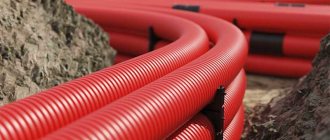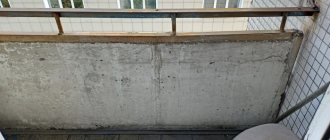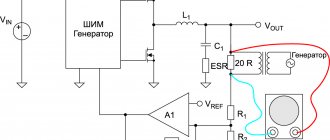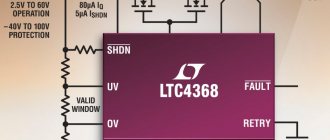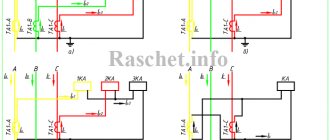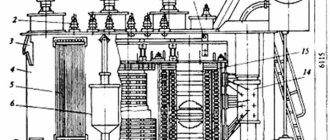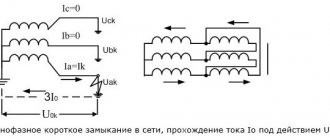Voltage drops and other problems in electrical networks are by no means uncommon. They can lead to the failure of expensive equipment and even threaten the life and health of people. To prevent such consequences, there are various electrical network protection devices on the market, used depending on the nature of the problem.
In this article you will learn: what voltage surges are and what are their causes; What network protection devices exist and in what cases are they used?
Surge Protection Relay
Protecting your home from power surges using a LV is recommended in cases where the voltage in the network is stable and its noticeable surges are rare. RN is a device capable of reading the parameters of an electric current and breaking the electrical circuit at the moment when the indicators go beyond a given range. After the indicators in the general network are normalized, the device will automatically close the circuit and restore power to consumers. The function of restoring power after a specified period of time (with a delay), built into the 220V voltage relay for the home, helps to extend the life of some household devices, refrigerators, etc.
LVs have small dimensions, relatively low cost and good performance. The disadvantages of RNs include their inability to smooth out fluctuations in electrical energy. For maximum protection of all consumers, you will need to install several devices at once.
The LV protects the network only from unacceptable voltage surges and is not intended to protect against short circuits (this function is performed by circuit breakers).
Modern launch vehicles come in three types:
1. A stationary relay built into the electrical panel of a house or apartment.
2. Relay for individual protection of one consumer.
3. Individual protection relay for several consumers.
If everything is almost clear with the operation of relays of the second and third types, then the first type LV has a more complex design, and its installation requires certain knowledge. Such devices are mounted at the entrance to the premises, thus providing protection against power surges in the network of all household electrical equipment.
▍Act one. We attract lightning and send it to the ground.
Everyone has probably heard and seen about lightning rods (they are also lightning rods, and they are also lightning rods):
Lightning rod on the dome of a wooden church.
. This is not necessarily a spire sticking into the sky; for power lines it is made in the form of a lightning protection cable, which is taller than all others and does not have insulators:
A pair of lightning protection cables over power lines.
. The principle is simple - it is a conductor electrically connected to the ground, and placed as high as possible. If conditions for a lightning strike are created in this area, then most likely (but not 100% guaranteed!) the discharge will occur precisely in the grounded conductor, and not in surrounding objects. The cross-section of the conductor is selected sufficient to conduct the discharge to grounding without damage. The lightning rod acts as an “umbrella”, taking on all the elements. The analogy with an umbrella becomes even more obvious if you look at the formulas for calculating the radius of the area protected by a lightning rod - the higher the lightning rod, the larger it is. It is worth noting that there are several methods for determining the area protected by a lightning rod, and even among lightning protection specialists there is no unanimous opinion which method is more accurate. For example, a photo from the Encyclopedia Britannica shows two approaches to calculating the protected area - a cone along the height of the lightning rod and the rolling sphere method.
Areas protected by a lightning rod.
Source. The lightning rod turned out to be damn important for use in wooden houses.
If previously a lightning strike on the roof could start a fire (the energy of the discharge on the way to the ground was partially converted into heat, setting everything on fire), then redirecting the discharge along a metal pin into the ground saved from such terrible consequences. And if you look closely, all modern buildings and structures have a lightning rod on the roof. And particularly important objects may generally have quite complex lightning rod designs. In those places where proper grounding is difficult to do (on a rock, sand), lightning protection becomes a completely non-trivial task. This is what lightning rods look like at a gas station in Nigeria: The developers decided that lightning rods of this shape work better.
Source But, if the method worked flawlessly, the text would break off at this point. It was cut short before the advent of sensitive and delicate equipment.
Selecting a launch vehicle
When choosing a relay to protect your home network, it is enough to know the rating of the electric current that the input circuit breaker is capable of passing through. If, for example, the switch capacity is 25A (which corresponds to a power consumption of 5.5 kW), then the performance characteristics of the LV should be one step higher - 32A (7 kW). If the switch is designed for 32A, then the relay must withstand a current of 40 - 50A.
loauser FORUMHOUSE
For this case, I took a 40 A relay, with an input circuit breaker of 25/32 (the first one is, but the setting will increase).
Some people choose a PH brand based on total power consumption. This is not entirely correct. After all, a relay capable of withstanding a current of 32A can safely operate both at a load of 7 kW and at a much higher power consumption. Only in the second case, it is necessary to integrate a special magnetic contactor into the working circuit of the LV. But more on that in the next section.
▍Act eight. Practical.
Anyone who has read this far has probably already asked the question - why do I need an SPD and how to turn it on?
Let's get down to specifics. If you live in a private house and electricity is supplied to the house via an overhead power line, then you need an SPD, and class I. (In some cases, class II may be enough, but there are a lot of “buts”) If you live in an apartment building , all engineering systems of which are in order, then the SPD is not an essential device, but it will not make it worse. A typical scheme for using SPDs looks like this (again, I took the picture from the OBO BETTERMANN manual:
Input on the left. Class I surge protectors are located immediately after the input circuit breaker (or after the electric meter, if the electric grid company wishes), one for each phase. Re-grounding (5) is visible and TN-C becomes TN-CS. Without grounding, the SPD does not work - where should it discharge the pulse energy, except into the ground?
Inside the building, on an intermediate switchboard, for example a floor switchboard, class II SPDs are used, which will suppress what could pass through the SPDs at the input. Please note that between N and PE there is an SPD specially designed for this purpose, since normally the voltage between N and PE is low.
And finally, a class III surge protector is installed next to the consumer. Well-designed devices already have surge protection built into them by the manufacturer.
▍Summary:
- Electronic equipment in your home is vulnerable to electromagnetic pulses from lightning strikes, even nearby.
- To protect against these pulses (as well as from pulses arising when switching inductive loads), SPDs were invented - surge protection devices. An SPD can contain both a surge arrester and a varistor, it all depends on the characteristics that the SPD must provide.
- SPDs are produced in different classes, from I to III. Class I devices are suitable for installation on the input panel of a house. But there are also devices that can provide protection corresponding to several classes.
- The entire protective effect of the SPD can be negated by incorrect connection.
- The SPD may fail, and without regular inspection it will go unnoticed.
Video version of the post, not word for word, but close to the text, for those who like to listen and watch:
▍What else to read to deepen your knowledge:
1. First of all, regulatory documentation.
We say Okay, Google, “Lightning protection device for buildings, structures and industrial communications: Collection of documents. Series 17. Issue 27" and carefully study, the collection contains regulatory documents: Instructions for the installation of lightning protection of buildings and structures (RD 34.21.122-87) and Instructions for the installation of lightning protection of buildings, structures and industrial communications (SO 153-34.21.122- 2003) and also separately google and look at GOST R IEC 62305. It consists of a large number of parts, but not a single blogger on the Internet can exceed the regulatory requirements. 2. There is a wonderful website https://zandz.com The guys not only recorded webinars with invited specialists in the field, but also made transcripts of them, so you can quickly read them instead of watching videos. They have posted all this splendor for free, but registration is required. Respect. Video recordings of webinars are on their YouTube channel and are available without registration, for example webinars by Prof. Bazelyan (https://www.youtube.com/watch?v=R-KbjRb4Yuw&list=PLjJ4-onvu94qpAA_zsCLkrTzJMBLXU0ns) 3. A good article on Habrahabr 4. Many manufacturers produce design manuals - such veiled advertising, where the basics are explained in simple language and at the same time excerpts from the catalog of equipment that solves the problem are given. There is an excellent manual in Russian from Schneider Electric (https://www.se.com/ru/ru/download/document/MKP-CAT-ELGUIDE-19/), we are interested in section J, dedicated to surge protection. Everything in it is quite simple, clear and accurate. 5. If you speak English, then companies that produce everything for lightning protection have released wonderful manuals. Of course, with a bias in my products, but as you can see, I borrowed some illustrations from them. This is OBO BETTRMAN lightning protection guide, Dehn lightning protection guide. I would also like to express my gratitude to Pavel, Denis, Evgeniy and Victor for reviewing the draft article. Other articles in the series: About fuses, about circuit breakers, about RCDs, about choosing a circuit breaker, about protection devices.
LV installation
The standard diagram for installing a LV in a distribution panel is shown in the figure. This is the simplest protection against power surges.
Work on installing the pH should only be carried out with the main switch turned off!
As you can see, everything is simple: the control relay is installed immediately after the electric meter and is connected to the phase wire through which power is supplied to the entire house. When a surge occurs beyond the set (adjustable) range, the relay disconnects the external power supply from the internal electrical wiring, and protection against voltage surges is provided in the apartment and in the house.
The pH mounted in the panel panel takes up minimal space on the DIN rail.
If the power of home network consumers totals 7 kW or more, manufacturers strongly recommend integrating an additional electromagnetic contactor into the operating circuit of the LV. Although, a reliable contactor in the overall scheme will never become an extra detail, see the following comment:
Vitichek FORUMHOUSE user
It is better to install a contactor to any relay, although manufacturers write that the LV can withstand high currents. The contactor has larger contacts and lower resistance.
This device helps relieve the load on the LV contacts, independently disconnecting the power line from the general network of household consumers. The control relay, at the moment of unacceptable overvoltage, only issues a shutdown command. After this, the electromagnetic coil of the contactor disconnects the power contacts connecting the external and internal networks. The connection diagram in this case will be as follows:
Overvoltage protection system.
▍Act six. Standard zipper.
Each lightning strike is unique in its characteristics. But protection devices need to be somehow tested, compared, developed, so we had to agree on some characteristics of the electromagnetic pulse that lightning induces. Therefore, on the front panel of the protection devices, as well as in the documentation, you can see: (look at the markings on the sawn SPD from IEK in the photo above)
- The peak value of current that passes through a device without damaging it, in thousands of amperes (kA). For example, 50 kA means that the peak current in the pulse reaches 50,000 Amperes.
- Record the duration of the pulse, in microseconds. It is indicated through a fraction. For example, 10/350 means that the pulse rises to the maximum current value in 10 microseconds, and then smoothly decreases to zero in 350 microseconds. Or for example 8/20. (10/350 is a long and powerful pulse, characteristic of a direct hit by a discharge, and 8/20 is a short one, more characteristic of a lightning strike nearby)
- Operating voltage. This is the normal voltage in the line to which the protection is connected.
- Clipping voltage, in volts. This is the value of the residual pulse voltage at the terminals of the device (later I will indicate why this is important), to which the protection device can reduce it.
- Device class (see the part about the zone concept).
It is worth noting that even many years of collected statistics do not exclude the possibility that you have not sinned so much that you will be struck by abnormally powerful lightning, but the probability of this is very low. (For example, IEC 62305-1 believes that even for the most notorious sinners, lightning with a charge of more than 300 C is released in less than 1% of cases.)
Here is a beautiful illustration from the OBO BETTERMANN manual, which illustrates the statistics of lightning current discharges and how different lightning protection levels (LPL) cover them:
Since the process of predicting the current of lightning that will strike an object in the future is akin to the process of predicting the price of Bitcoin (that is, fortune telling), they came up with different levels of lightning protection, and the picture above clearly shows how they relate. The required level of protection is selected according to an assessment of the risk of damage from lightning strikes.
Protection against voltage surges 220V
In order for the LV to benefit its owner, its operating parameters (permissible voltage limits and power resumption delay time) must be correctly adjusted. If the operating circuit uses one pH, then the limits of permissible values should be set based on the characteristics of household appliances that are sensitive to changes. The most sensitive and expensive equipment is audio and video equipment. The range of permissible voltage values for it is 200 – 230V.
The permissible voltage deviation from the nominal values in domestic energy networks is 10% (198...242V). In the case of frequent activation of the LV, these indicators can be taken as a basis when adjusting the relay. However, in this case it is recommended to protect sensitive consumer electronics with the help of low-priced portable stabilizers.
DenBak FORUMHOUSE user
Nobody says that you need to turn off at plus or minus 15V. There is a range of maximum permissible deviations of 10%, which most devices should withstand. Based on this, you need to set approximately 190V-250V. Although, with our state of networks, especially in the private sector, everything is expected. So reasonable caution won't hurt.
In order to ensure the most reliable protection for all consumers, an electrical circuit with several relays should be used. A working protection scheme, including several LVs, allows consumers to be divided into groups - in accordance with their sensitivity to overvoltage:
- The first group includes audio and video equipment (permissible voltage values - 200 - 230V);
- The second includes household appliances equipped with an electric motor: refrigerators, air conditioners, washing machines, etc. (permissible values – 190 – 235V);
- The third group is simple heating devices and lighting (permissible values - 170 - 250V).
Each consumer group is connected to its own RN. In this scheme, the operating parameters of each relay are configured individually.
Protecting the network from overvoltage and surges.
The power resumption delay time must comply with the operating requirements for household appliances. For some refrigerators, for example, the recommended delay is 10 minutes.
Definition of the term
This concept means sudden changes in mains voltage that go beyond the permissible deviations. Let us remind you that, according to current standards, permissible voltage deviations should not exceed the nominal value, and the maximum permissible ones - Actually, the parameters characterizing quality voltage are indicated in the contract for the provision of services. At the same time, the description of permissible limits should not contradict current standards.
This definition includes short-term overvoltage and undervoltage, as well as deviations (lasting more than a minute) and fluctuations (lasting less than a minute). Pulse overvoltages, called surges, also fit this description.
Voltage surges have a negative impact on voltage quality
Surge Protectors
If your house experiences constant power surges, the LV will operate several times a day, de-energizing the entire house. Therefore, in such cases, a less simple, more expensive, but also more practical method of protecting home electronics is recommended. It consists of using stabilizers - devices that smooth out voltage surges in the external network, producing a constant 220V output.
Based on the type of connection, there are two types of stabilizers: local (which are connected to an outlet, protecting from one to several consumers) and stationary (connected to the input power cable and protecting all consumers of the home network). Local stabilizers should be used to protect the most sensitive household appliances. They can be used in conjunction with a stationary launch vehicle. Stationary stabilizers are complex devices that not only smooth out voltage drops throughout the entire household network, but are also capable of saving expensive equipment by automatically turning off the power to consumers when overloaded and reaching critical values.
It is highly recommended to install stationary stabilizers if the voltage value goes beyond 205...235V several times a day (this can be determined using an ordinary tester).
If the lights in the house are constantly blinking, and the voltage goes beyond 195...245V, then using household electrical appliances without a stabilizer is prohibited!
Uninterruptible Power Supply (UPS)
Uninterruptible power supplies are often mistakenly called stabilizers. This is fundamentally wrong, since their operating principles are completely different. The UPS does not stabilize the voltage and cannot influence it at all. It has batteries , the charge of which should be sufficient so that the user can smoothly complete work with the equipment during a power outage.
Usually an uninterruptible power supply is a home computer's best friend. Not suitable for protecting the entire network. There is a UPS with a built-in stabilizer . Such devices are capable of leveling out small voltage surges, but they are not cheap.
How to choose a stabilizer
The stabilizer should be selected based on the total power of household consumers. The device must have a decent amount of power.
Mishael761 FORUMHOUSE user, Moscow.
The power reserve should be 2 times greater than existing needs. That is, a 10 kW stabilizer is designed for half the actual load (5 kW) at a minimum external voltage of 150 volts (i.e., with a large drop). This should be taken into account when choosing.
Voltage stabilizer in the panel: installation
It is recommended to install the stabilizer near the power panel in accordance with the following diagram.
The stabilizer (as well as the LV) should be integrated into the overall circuit directly after the meter. After all, these devices are also consumers, therefore, they cannot be installed in front of the meter.
Protection of three-phase networks using a stabilizer
Let's say right away that three-phase stabilizers are designed to protect exclusively three-phase consumers. If three-phase power supplies your home, then to create a stable voltage in the internal network, it is advisable to install a separate single-phase stabilizer for each phase.
This approach will significantly reduce your costs (3 stabilizers with a power of 5, 7 and 10 kW are always cheaper than one device rated at 30 kW). In addition, if there is a voltage drop in one of the phases, the three-phase device will de-energize the entire house. This is a design feature of a stabilizer aimed at protecting three-phase electric motors.
You can discuss the features of choosing and operating stationary stabilizers by visiting the corresponding section of our forum. If you are interested in sharing your personal experience of installing a voltage control relay paired with a contactor, then we also have a suitable topic for this case. A video detailing the installation of the panel and junction box will help you connect your apartment to the power supply system in accordance with generally accepted rules for electrical installation work.
Danger of overvoltage
The danger of overvoltage is that it can cause malfunctions in electrical equipment and lead to partial or complete breakdown. It can cause combustion of refrigerators, washing machines, televisions, computers and other household appliances.
It is worth noting that breakdown of household appliances is not the worst consequence of overvoltage. It can cause a room fire and human deaths, so it is important to use protective equipment and secure the home electrical network.
